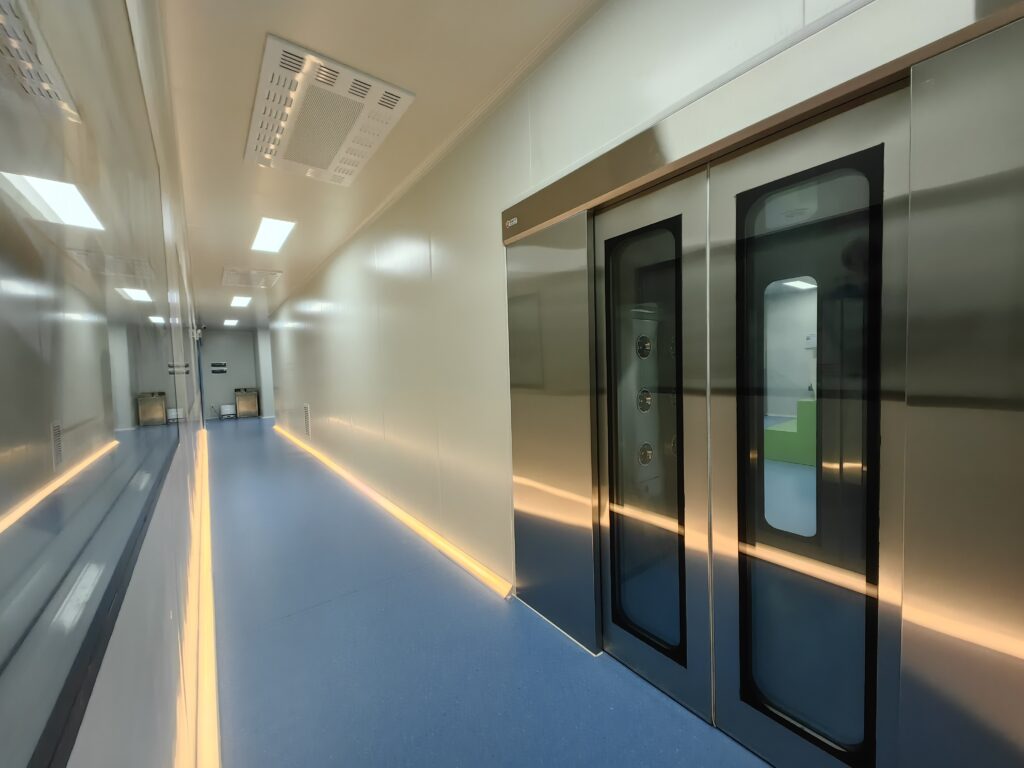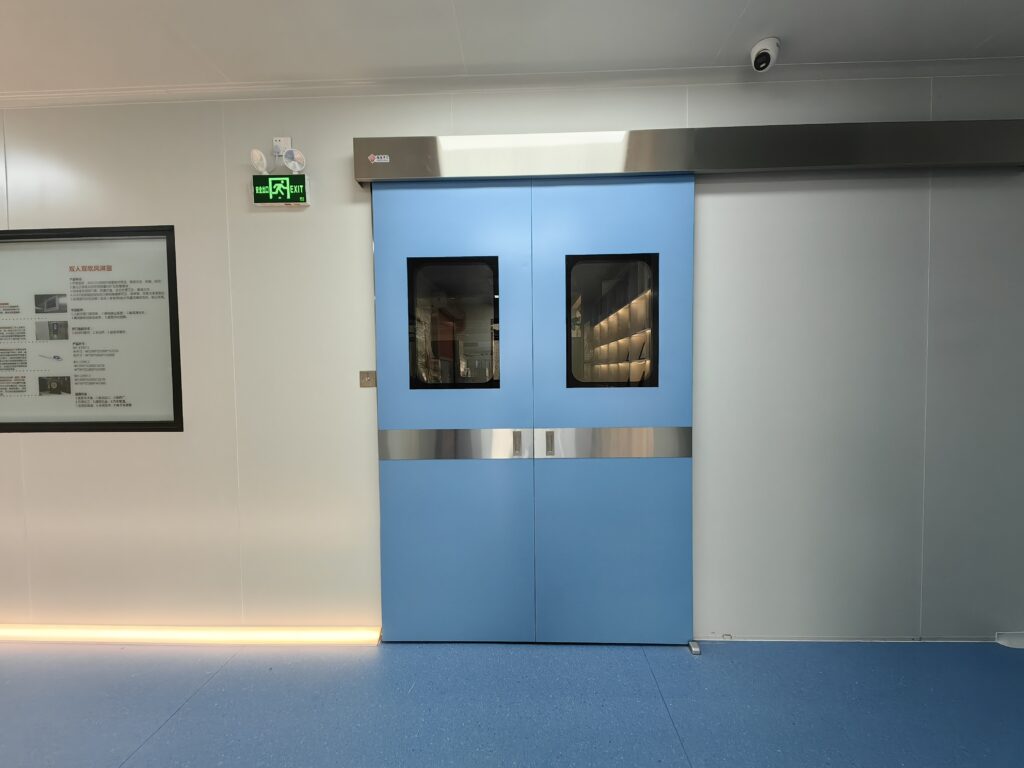Your Silent Guardian in the World of Contamination Control

A cleanroom door isn’t just a door—it’s a gatekeeper of precision.
In high-stakes environments where even a speck of dust can derail production or compromise patient safety, cleanroom doors serve as the unsung heroes. They’re not merely access points—they are engineered control mechanisms, purpose-built for environments that demand ultra-clean air, strict particle control, and total isolation.
Whether you’re fabricating semiconductors, compounding sterile pharmaceuticals, or inspecting medical devices, cleanroom doors help preserve ISO-classified conditions with unwavering reliability.
These doors are designed to:
Prevent contamination ingress by sealing clean zones from external pollutants
Stabilize air pressure differentials (positive or negative), maintaining airflow integrity
Support hygiene and sterilization protocols, allowing frequent cleaning without degradation

Why Are Cleanroom Doors Important?
In cleanrooms, air is currency—and controlling its movement is non-negotiable. Every time a door opens, it creates a breach. Cleanroom doors minimize the impact of this breach through precise engineering, material science, and airflow strategy.
The door itself becomes part of the cleanroom’s air management system. A poor-quality door can result in air leakage, pressure drops, contamination crossovers, and, ultimately, failed audits or compromised product safety.
In regulated industries—such as pharmaceuticals, electronics, aerospace, and biotechnology—that’s not just costly. It’s catastrophic.
Key Features of Cleanroom Doors
Airtight Sealing
High-integrity doors use mechanical gaskets or magnetic seals to eliminate gaps and maintain controlled airflow. This prevents particle migration between rooms of differing cleanliness classes.
Smooth, Flush Surfaces
The design typically eliminates crevices, hinges, or handles that can trap dust. Surfaces are flat, easy to disinfect, and meet GMP and ISO 14644-1 compliance.
Non-shedding, Chemical-Resistant Materials
Materials like stainless steel, powder-coated metal, or high-pressure laminate (HPL) are non-porous and resist degradation from sterilizing agents.
Hands-Free Operation
Cleanroom doors often include automatic systems—motion sensors, elbow switches, foot pedals—to minimize contact and reduce the risk of contamination from human touch.
Interlock Mechanism (Airlocks)
Many cleanrooms use two-door interlock systems where only one door opens at a time, preserving pressure zones and stopping unfiltered air from leaking in.
Types of Cleanroom Doors
| Door Type | Description |
|---|---|
| Swing Doors | Traditional doors with single or double leaf design; common in ISO 7–8 rooms |
| Sliding Doors | Space-efficient; ideal for high-traffic areas and narrow corridors |
| Roll-Up Doors | High-speed, automated; used in material transfer zones or loading areas |
| Hermetic Doors | Precision-sealed with gaskets for critical zones requiring maximum sealing |
| Glass Doors | Tempered, cleanroom-rated visibility panels; useful in less sensitive zones |
Cleanroom Door Certifications & Compliance
Cleanroom doors are more than industrial-grade—they’re certified components of a validated cleanroom system. Here are key compliance references:
🔹 ISO 14644-1 – Classifies cleanrooms based on allowable particle count
🔹 GMP Guidelines – Establish cleanroom requirements for pharmaceutical production
🔹 USP <797> and <800> – Govern sterile and hazardous drug compounding facilities
🔹 IEST-RP-CC006.3 – Recommends materials and surface finishes for cleanroom applications
If your industry is FDA-regulated, using doors that meet GMP and ISO standards isn’t just good practice—it’s a legal necessity.
Final Thoughts
Cleanroom doors may not seem like headline material—but when it comes to regulatory compliance, product integrity, and occupational safety, they’re indispensable.
They don’t just open and close.
They protect, preserve, and perform.
So next time you step through one, remember: that door is doing a lot more than letting you in—it’s keeping everything else out.

